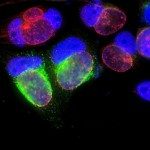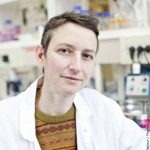Lien vers Pubmed [PMID] – 30848236
Microbiol Spectr 2019 03;7(2)
Intravacuolar development has been adopted by several bacteria that grow inside a host cell. Remaining in a vacuole, as opposed to breaching the cytosol, protects the bacteria from some aspects of the cytosolic innate host defense and allows them to build an environment perfectly adapted to their needs. However, this raises new challenges: the host resources are separated from the bacteria by a lipid bilayer that is nonpermeable to most nutrients. In addition, the area of this lipid bilayer needs to expand to accommodate bacterial multiplication. This requires building material and energy that are not directly invested in bacterial growth. This article describes the strategies acquired by the obligate intracellular pathogen to circumvent the difficulties raised by an intravacuolar lifestyle. We start with an overview of the origin and composition of the vacuolar membrane. Acquisition of host resources is largely, although not exclusively, mediated by interactions with membranous compartments of the eukaryotic cell, and we describe how the inclusion modifies the architecture of the cell and distribution of the neighboring compartments. The second part of this review describes the four mechanisms characterized so far by which the bacteria acquire resources from the host: (i) transport/diffusion across the vacuole membrane, (ii) fusion of this membrane with host compartments, (iii) direct transfer of lipids at membrane contact sites, and (iv) engulfment by the vacuole membrane of large cytoplasmic entities.

